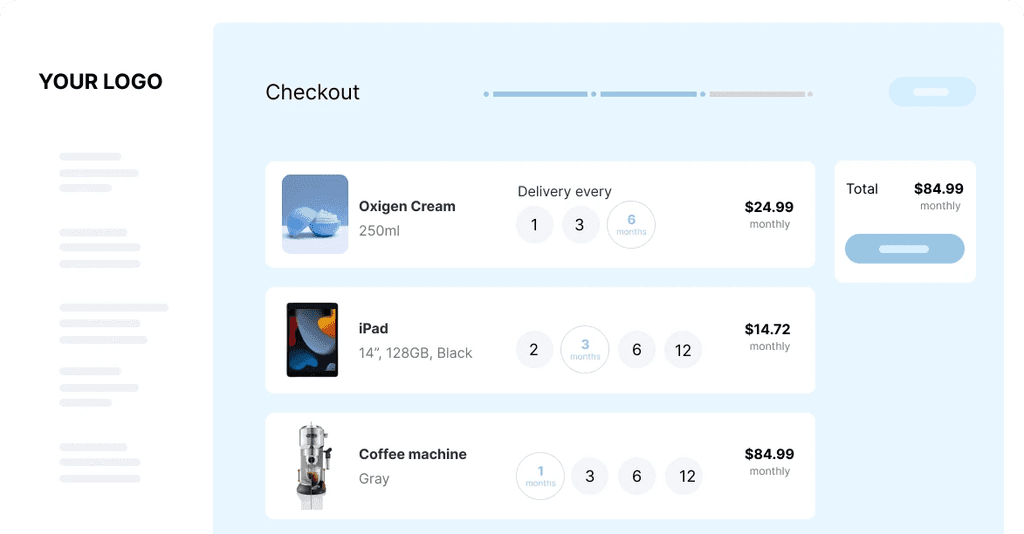How to Build a Successful Circular Economy Business Model: A Complete Guide
Flor Bermúdez

Feb 8, 2025
Understanding the Circular Economy Market Landscape

The circular economy offers a fresh approach to how businesses operate, moving away from the old "take-make-dispose" model. At its core, it focuses on making the most of resources through smart product design that enables reuse, repair, and recycling. Companies are discovering that this approach not only helps the environment but also makes good business sense. For more insights, check out: How the Circular Economy is Transforming the Sustainable Future.
Market Size and Growth
The numbers tell a compelling story about the growing importance of the circular economy. The market reached USD 553 billion in 2023, showing strong business adoption of these principles. Even more impressive is the expected growth rate - analysts predict a CAGR of 13.19% from 2024 to 2030. These figures highlight how circular business practices are becoming essential for future success. Learn more about market growth here.
Key Market Drivers
Two main factors are pushing businesses toward circular models. First, customers are actively seeking out products and services that minimize waste and environmental impact. Second, governments worldwide are introducing rules and incentives that encourage businesses to adopt circular practices. This combination of consumer demand and policy support is making the circular economy increasingly attractive to companies.
Sector-Specific Opportunities
Different industries are finding unique ways to embrace circular principles. Fashion, electronics, and manufacturing companies are leading the way with subscription-based models and advanced recycling programs. Many businesses are reimagining how they design products, source materials, and handle waste. The results show that going circular can create new revenue streams while building stronger customer relationships - proving that what's good for the planet can also be good for business.
Making the Most of Market Forces for Business Growth

The circular economy offers more than just environmental benefits - it creates real business opportunities through powerful market forces. Companies that understand and adapt to these emerging dynamics can gain significant advantages. Success requires paying close attention to what customers want and what regulators require.
Smart Regulation Response: Finding the Business Upside
Government policies increasingly reward circular practices while discouraging traditional linear approaches. Take Extended Producer Responsibility (EPR) programs - these require companies to manage their products' end-of-life disposal, pushing them to design for recycling and reuse from the start. Rather than seeing these rules as obstacles, smart businesses use them to spark improvements in their operations and stand out from competitors.
The Numbers Make Sense: Better Resource Use Pays Off
Circular business models focus intensely on getting the most value from materials and eliminating waste. This approach helps companies cut input costs and reduce disposal fees, improving profitability. Many find new revenue sources by repurposing what used to be waste or creating closed-loop systems. Learn more about circular economy market drivers and how they affect business success.
Customer Priorities: Meeting Growing Green Demand
More customers actively seek out sustainable products and services that match their values. This creates a clear opportunity for businesses embracing circular principles. Companies can build stronger customer loyalty by offering items designed to last, be repaired, and eventually recycled. Product-as-a-service models take this further, creating ongoing relationships with customers while generating reliable revenue streams.
Creating Sustainable Revenue Streams Through Circularity
A circular economy business model reimagines traditional business operations. Instead of the typical "make, use, dispose" approach, it focuses on getting maximum value from resources and eliminating waste. This shift opens up fresh ways to generate income while supporting environmental goals.
Monetizing Sustainability: New Revenue Opportunities
Smart companies are finding ways to turn sustainability into steady income streams. The product-as-a-service model is gaining traction - customers pay a subscription fee to use products rather than buying them outright. This encourages companies to make durable, repairable items that can serve multiple users over time. Want to learn more? Check out How subscriptions are changing consumer behavior.
Reverse logistics is another key opportunity. Companies can collect used products, recover valuable materials, and either resell them or use them in new manufacturing. This reduces material costs while creating new revenue sources. The market for secondhand, refurbished and rental items is booming - generating $383 billion worldwide in 2022. For a deeper dive into the numbers, see the latest circular economy market statistics.
Building Resilience: Adapting to Changing Markets
Circular business models offer built-in protection against supply chain issues and material price swings. By relying less on new raw materials and more on existing resources, companies create more stable operations. This approach typically leads to stronger customer relationships too - when you help customers get more value from products through repair, refurbishment and trade-in programs, they're more likely to stick with your brand.
From Product to Service: Redefining Value
The shift from selling products to providing ongoing services is at the heart of circular business models. Rather than focusing on one-time sales, companies can build lasting customer relationships through subscriptions, maintenance plans, and upgrade services. This creates reliable income streams while reducing waste. The approach works because it matches what many customers want - access to great products and services without the hassles of ownership. By connecting business success to sustainability, circular models point the way toward a more stable economic future.
Building Lasting Competitive Advantages

Companies adopting circular economy models gain significant benefits that help them stand out from competitors. This approach goes beyond environmental responsibility - it creates more profitable and resilient businesses while building stronger customer connections. Let's explore the key advantages that make circular business models so effective.
Enhanced Customer Relationships
Circular models naturally create ongoing customer interactions instead of one-time transactions. For example, when companies offer products-as-a-service, they maintain regular contact with customers throughout the product lifecycle. This builds stronger loyalty and provides valuable customer feedback.
The sharing economy aspect of circular models also helps create communities around products and services. Customers feel more connected when they participate in systems that maximize resource use. Read more about the benefits of circular business models in this World Economic Forum article.
Increased Brand Value
Modern consumers care deeply about the environmental impact of their purchases. Companies that embrace circularity gain significant trust and credibility with environmentally conscious buyers. This commitment to sustainability helps:
Build stronger brand loyalty
Attract new environmentally aware customers
Stand out in crowded markets
Command premium pricing
Improved Operational Efficiency
Circular models focus heavily on optimizing resources, which creates multiple benefits:
Lower material costs through reuse and recycling
Reduced waste disposal expenses
New revenue from recovered materials
Decreased reliance on raw materials
These efficiency gains improve profitability while supporting sustainability goals - a powerful combination for long-term success.
Measuring and Communicating Circularity Benefits
To maximize the advantages of circular business models, companies must track and share their impact. Key metrics to monitor include:
Percentage of recycled materials used
Reduction in waste generated
Product lifespan improvements
Cost savings achieved
Being transparent about these results builds trust with stakeholders and reinforces the company's dedication to sustainability. This openness attracts both customers and investors who value responsible business practices.
Implementing Your Circular Economy Strategy
Taking your business from a traditional linear model to a circular one takes careful planning and execution. Making this switch means rethinking core business operations and implementing new practices that prioritize sustainability, reuse, and waste reduction.
Transitioning from Linear to Circular
At its core, moving from linear to circular means shifting away from "take-make-dispose" to a model focused on keeping materials and products in use. Just like in nature, where nothing goes to waste, a circular business turns outputs from one process into inputs for another. This fundamental change requires new approaches to product design, manufacturing, and customer relationships.
Engaging Stakeholders
Success depends on getting everyone on board - from suppliers to employees to customers. Work closely with suppliers to source sustainable materials. Help your team understand and embrace circular principles. Show customers the benefits, like how modular product designs allow for easy repairs and upgrades. Clear communication builds trust and support for these changes.
Overcoming Implementation Challenges
Making the switch to circular practices takes investment in new technologies and processes. While startup costs can be significant, most companies find the long-term savings in materials and increased customer loyalty more than make up for it. The circular economy market is growing fast, with analysts predicting a CAGR of 21.88% from 2024 to 2031 as environmental awareness rises and companies find new ways to reuse old parts. See the full market analysis here.
Proven Approaches for Successful Adoption
Several key strategies can smooth the transition. implementing resource planning helps track and optimize material flows. New technologies like 3D printing and AI-powered sorting support circularity goals. For more on this topic, see Recommerce and Its Impact on Traditional Manufacturing. Set up performance metrics to measure progress - track waste reduction, recycled material use, and product lifespan.
Real-World Transformation Stories
Learning from companies that have already gone circular provides valuable insights. Study both their successes and setbacks to inform your own strategy. The most successful transitions typically combine technical innovation with strong stakeholder engagement and a clear long-term vision for sustainable growth.
Preparing for the Future of Circular Business
The business world is embracing circular models at a rapid pace. Companies need clear strategies to succeed in this evolving space. Smart planning and adaptability are key to staying competitive as circular practices become standard.
Technological Advancements: Driving Circular Innovation
New technologies are making circular business models more practical and profitable. Material science breakthroughs are creating better biodegradable materials and recycling methods that reduce waste and raw material needs. Blockchain technology helps companies track materials throughout their supply chains. This improved tracking builds customer trust while optimizing how resources are used.
Shifting Consumer Preferences: Embracing Sustainable Consumption
Buyers increasingly choose products based on environmental impact. They want items designed to last, be repaired, and recycled easily. 78% of consumers say sustainability influences their purchasing decisions. Companies that meet these demands gain loyal customers and market share. This shift toward conscious consumption shows no signs of slowing.
The Evolving Regulatory Landscape: Adapting to New Rules
Government policies now actively promote circular practices. Many regions have banned single-use plastics and required producer responsibility for product lifecycles. While adapting takes work, these changes push innovation. Forward-thinking companies that embrace new requirements early gain advantages over competitors playing catch-up.
Building a Future-Proof Circular Business
Success requires staying ahead of circular economy trends. Key steps include:
Investing in research and development
Building strong supplier relationships
Getting customer feedback regularly
Monitoring policy changes
Training teams on circular practices
Companies taking these steps position themselves to thrive as circular models become standard.
Ready to make your business more sustainable? Sharpei offers payment solutions designed for circular commerce, helping companies offer rentals, lease-to-own options, and subscriptions. Learn more about how Sharpei can help you thrive in the circular economy.
Related posts
Ready To Join The Circular Movement?
United for a smarter shopping experience and a better planet












